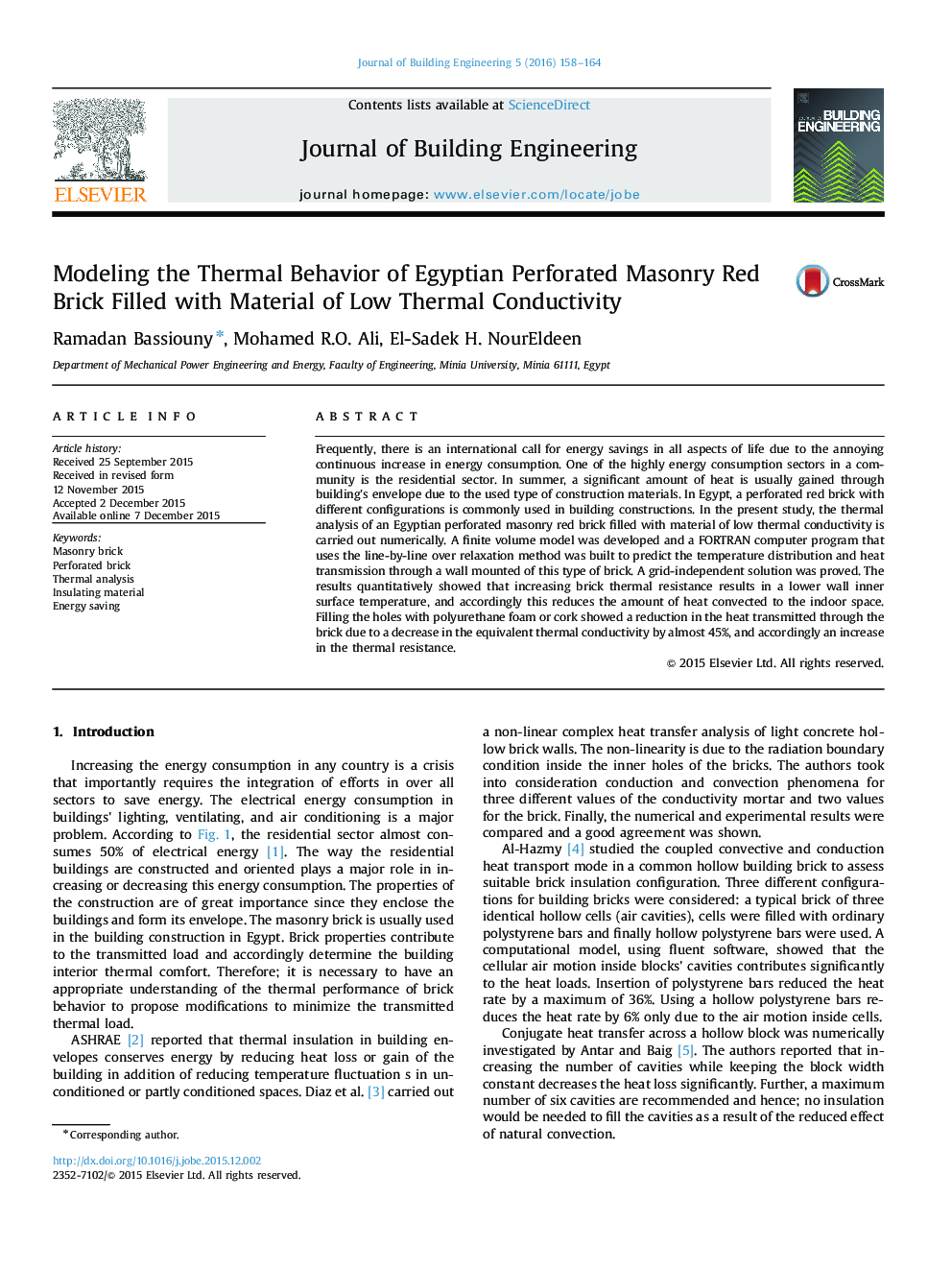| کد مقاله | کد نشریه | سال انتشار | مقاله انگلیسی | نسخه تمام متن |
|---|---|---|---|---|
| 283845 | 509118 | 2016 | 7 صفحه PDF | دانلود رایگان |
• Using foam or cork in the holes increased the thermal resistance in heat-flow path.
• Low-conducted heat is obtained along places filled with low-conductivity materials.
• Almost 45% reduction in equivalent thermal conductivity is noticed in case of foam.Nearly 30% reduction in heat flow through a 9-m2 wall filled with proposed materials.
Frequently, there is an international call for energy savings in all aspects of life due to the annoying continuous increase in energy consumption. One of the highly energy consumption sectors in a community is the residential sector. In summer, a significant amount of heat is usually gained through building's envelope due to the used type of construction materials. In Egypt, a perforated red brick with different configurations is commonly used in building constructions. In the present study, the thermal analysis of an Egyptian perforated masonry red brick filled with material of low thermal conductivity is carried out numerically. A finite volume model was developed and a FORTRAN computer program that uses the line-by-line over relaxation method was built to predict the temperature distribution and heat transmission through a wall mounted of this type of brick. A grid-independent solution was proved. The results quantitatively showed that increasing brick thermal resistance results in a lower wall inner surface temperature, and accordingly this reduces the amount of heat convected to the indoor space. Filling the holes with polyurethane foam or cork showed a reduction in the heat transmitted through the brick due to a decrease in the equivalent thermal conductivity by almost 45%, and accordingly an increase in the thermal resistance.
Journal: Journal of Building Engineering - Volume 5, March 2016, Pages 158–164
